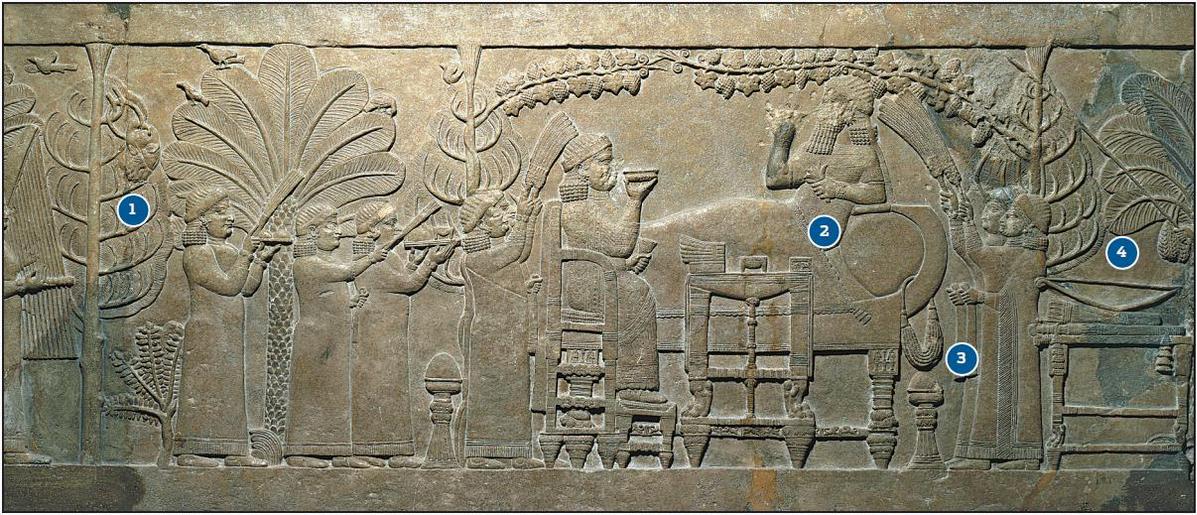An Assyrian story of gore and glory
Royalty, weaponry, warfare and reliefs — visitors to the Suzhou Museum learn of one king's rule, Zhao Xu reports.


A king of ancient Assyria was relaxing with his queen in what's believed to be the queen's garden under the cool canopy of grape vines. Raising their cups to their lips, the king and queen — one reclined on a couch while the other sat on a throne — appeared to congratulate each other. For what? One possible answer will send shivers down the spines of visitors to the Suzhou Museum in Suzhou city, East China's Jiangsu province, where a major exhibition, I Am Ashurbanipal: King of Assyria, sheds a rare light onto the lesser-known civilization of Assyria.
The one man around whom the exhibition's narrative has been spun is Ashurbanipal (669-631 BC), whose 38-year rule marked the pinnacle of Assyria's territory expansion. In Nineveh, the Assyrian capital in modern-day Mosul, Iraq, the king built a magnificent palace known as the North Palace. He decorated it with wall after wall of sculptural reliefs recounting his life on and off the battleground, including the aforementioned garden scene, on view at the Suzhou Museum through video footage.
"For those in the know, the scene is more a reminder of than a respite from Ashurbanipal's relentless battles, which helped to win Nineveh the name 'the city of blood'," says Zhang Fan, the exhibition's project manager. He points to a multistranded necklace hanging from the king's couch and a group of weapons including a sheathed sword and bow piled on a table.


















